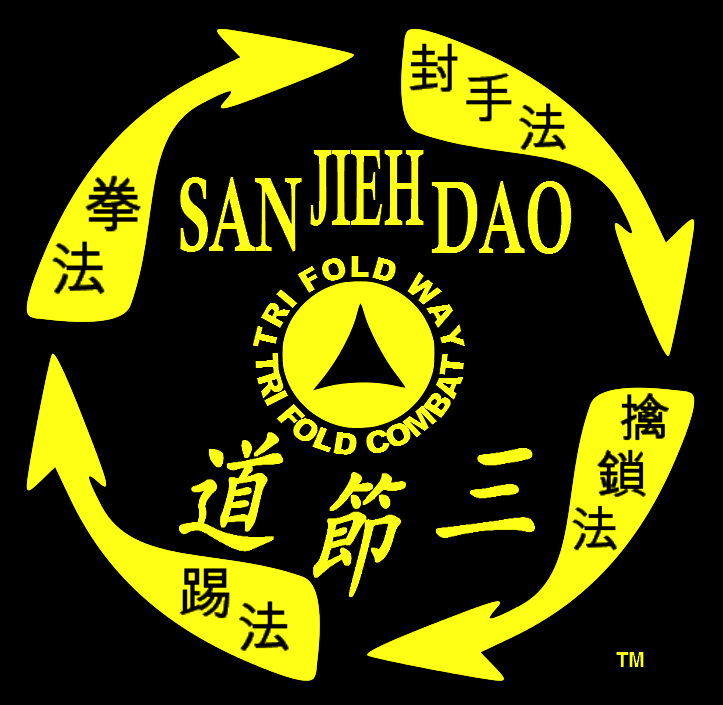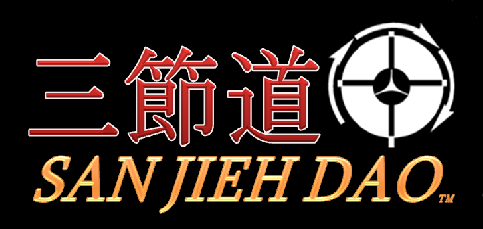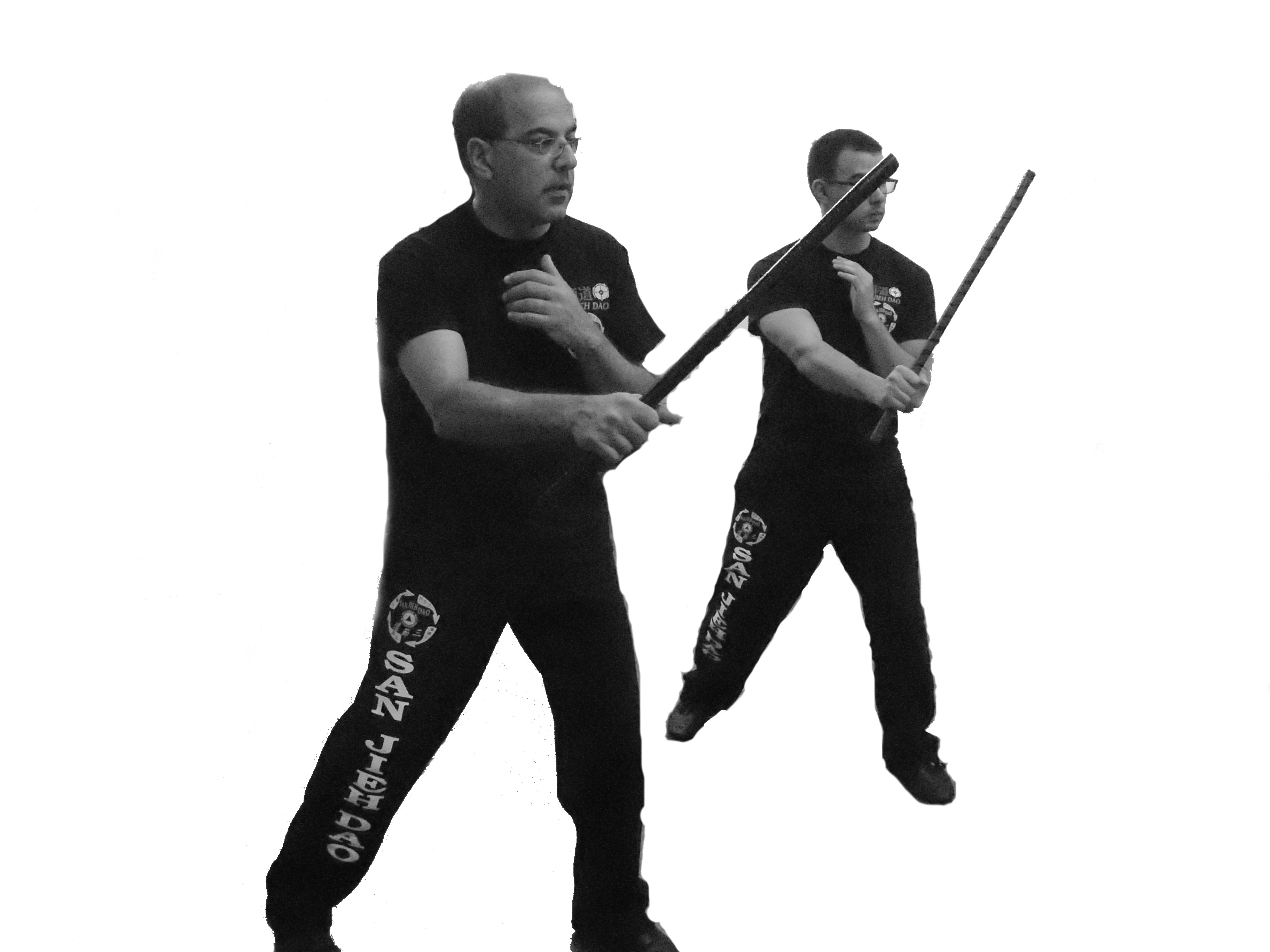
San Jieh Dao Martial Arts !

|
|
San Jieh Dao Martial Arts !
|
|
|
|||||||
|
San Jieh Dao Philosophical Facts
Copyright © Bahram Khozairy. All Rights Reserved.

|
|
|
What is San Jieh Dao...? What is in San Jieh Dao...? What is Liberated Jeet Kune Do...? JKD & SJD Philosophies...? SJD Adaptation Philosophy...? How long does it take to learn SJD...? Mandarin vs. Cantonese terms...(coming up) More Material & Q&A ...(coming up)
|
|
|
What is San Jieh Dao? San Jieh Dao (pronounced "sun" "Jiieeh" "daoo"). Translation (Mandarine Chinese) 三 (San, "Three") 節 (Jieh, "Section, Fold") 道 (Dao, "Way, Path") It is the personal martial art and philosophy of Sifu Bahram Khozairy. It is a Combative martial arts that is Tri Fold by nature, and which is extremely logical and practical. SJD is a blend of science
and art and is a
revolutionary art, for it challenges the traditional thoughts to consider
the non-traditional methods. It challenges the many years of closed systems
(styles) of martial arts, which are segregated, dead, static and empty
patterns of motions widely known as katas or forms within the world of
martial arts. It is a revolutionary art, for it not only challenges the
physical, but also the mental principles (thinking) as well as the spiritual
philosophies (doctrines) of the brands of martial arts, that are not only
not grounded nor in harmony with the Biblical truth, but which vigorously
oppose The Ultimate Truth. SJD HAS SOMETHING FOR EVERYONE !!
|
JKD vs. SJD philosophies ... To name just a few: San Jieh Dao includes parameters. Jeet Kune Do does not include any parameters. San Jieh Dao is an art with absolutes and relatives (all of its relativities are subject and bound to their absolutes and objectives). Jeet Kune Do is an art without any absolutes, and thus contains all relativities. San Jieh Dao is highly a rational art in terms of its philosophies, doctrines and elements. Which means, it not only will define its philosophies, doctrines, elements and nature, but will also defend them, rationally, logically and objectively, as a results of its objective apologetic nature. Jeet Kune Do is an inconsistent (non-definable) art, and which cannot consistently define, nor defend its philosophies, doctrines, elements and nature, due to its highly subjective and relativistic New Age nature. San Jieh Dao is purely combative in nature and have dissected and discarded all and every non-practical element. Jeet Kune Do is also combative in nature, however, due to its highly subjective and relative formation and its lack of absolutes, it cannot consistently discard all that is non-practical, thus leaves adequate room for the impracticalities, un-related, and useless elements. What is Liberated Jeet Kune Do? Liberated means "freed". In SJD, the JKD's physical elements that have validity and truth in them have been freed >> and then refined >> and then restructured >> and finally dispositioned. However, those elements may now hold a different meaning, position and status in San Jieh Dao, in terms of their usage, application and definition. |
|
What is in San Jieh Dao?
Ultimately, all and every elements are recoginized as: SJD Kicking, SJD Boxing, SJD Trapping, SJD Grappling, SJD Wrestling,
|
SJD Adaptation philosophies ... Did you know that the principle aim of all martial arts must be the preparation of the practitioner for a real life combative situation? Their aim needs to be this, but sadly to say most of the time it gets ignored or watered down. Most of the talented martial artist are too busy memorizing and rehearsing the unpredictable future fighting situations. As every logical and rational person knows a fighting situation cannot be patternized, because the situations are never the same, always changing, living, hence dynamic. One cannot predict a situation by merely rehearsing it through a series of predetermined forms, katas and dead and isolated patterns. Since Katas or Forms are merely lifeless, segregated, and void patterns and motions, then, how can an individual find enough courage and ever be ready for those unpredicted occurrences? How can he or she find sufficient confidence in order to be fully prepared for a real combat (in a Tri Fold level) and therefore overcome the adversaries? The answer is San Jieh Dao's principle of adaptability. If a student is to be serious about protecting his life, he needs to be able to learn to adapt to every real Tri Fold situation as safely as possible. The individual needs to learn to mold himself into those unpredicted events, instead of trying to mold and shape those combative events into his or her particular brand and style of martial arts, techniques or katas. In a sense, one needs to adapt into the circumstances, rather than being adopted by the circumstances. This is all accomplished through SJD's comprehensive training and curriculum.
How long does it take to learn SJD? As Mr. Spock would say: "As with every living being, all according to their gifts." It all depends on the individual, which is based upon the objective curriculum of San Jieh Dao. Another words, a student has to go through the curriculum, and if that individual is gifted and skilled and is able to apprehend the materials (according to his or her capacity level) then the individual student can have a good grasp of the art very shortly. An average student can go through one round of Phase 1 curriculum in 5 months of training (without missing classes). And Phase 1student knows quite a bit of material, since phase one cover a vast amount of material during that period of time. The harder the student works, the more he or she trains and even do their homework at home outside the class and continue to put all their heart and mind into it, the faster they will learn the art. There have been many students that have trained for few short weeks and have expressed that they have learned much more in those few weeks than in years of training in traditional closed systems (styles) of martial arts.
|
|||